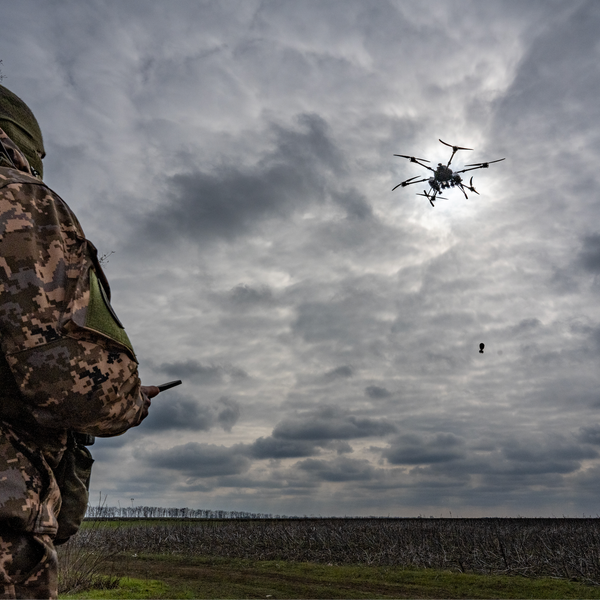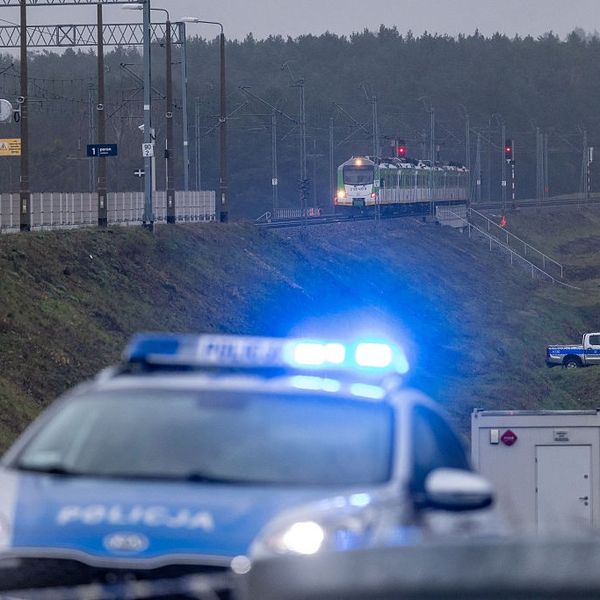OPINION — Military exercises and psychological warfare operations have been underway for months along the tense Russia-Ukraine and Poland-Belarus borders and care needs to be taken to make certain they don’t lead to real fighting.
On October 19, two U.S. B-1 strategic bombers, deployed temporarily in the United Kingdom but home-based in Texas, took off on a 12-hour mission. They flew east over the North Sea, refueled and flew south toward the Black Sea. Along the way, they were accompanied at times by Polish, Romanian and Canadian fighter planes because, as a David Axe story in Forbes reported, “In wartime, the non-stealthy [U.S. B-1] bombers might need escort to protect them from Russian fighters.”
As if to prove Axe was correct, on October 20, Russia’s Defense Ministry announced two of its Su-30 fighter jets had been scrambled that day to escort the American B-1s as they flew over the Black Sea near the Russian border.
When asked about the incident, Pentagon spokesperson Lt. Colonel Chris Mitchell told The Hill, “Our aircraft routinely interact with Russian units in international airspace and most interactions are safe and professional…Unless an interaction is unsafe, we will not discuss specific details."
On November 1, the USS Mount Whitney, flagship and command ship of the U.S. Sixth Fleet, and the guided-missile destroyer USS Porter had just entered the Black Sea to take part in joint operations with NATO forces in a multi-nation exercise called Castle Forge. It was the first time since 2018 that the command ship had been deployed to the Black Sea.
U.S. F-15 Strike Eagle fighters, temporarily deployed from the U.S. to bases in Greece, supported the USS Porter and USS Mount Whitney while they were in the Black Sea as both vessels took part in the Castle Forge exercises.
Russian President Vladimir Putin, who was in Sochi on the Black Sea that day, told the Tass News Agency that U.S. warships “can be clearly be seen through a binocular or a sight of Russia’s defense capabilities.” He added that Russian defenses had to improve because of the political situation and, “the growing intensity of NATO aircraft flights near Russia, [and] the emergence of the alliance’s guided-missile ships in the Baltic and Black Seas.”
The Cipher Brief hosts private briefings with the world’s most experienced national and global security experts. Become a member today.
The Russian Defense Ministry on November 12, described the deployment of the U.S. warships USS Mount Whitney and USS Porter, which sailed into the Black Sea, as a “threat to regional security and strategic stability.”
Three months earlier, in July, over a two-week period in the Black Sea and on land in southern Ukraine, the U.S., Ukraine, and more than 25 other countries, including some NATO allies, carried out an annual military exercise called Sea Breeze 2021. This sea, land and air set of exercises involved 5,000 sailors, soldiers, and airmen, 32 warships, and 40 aircraft.
Capt. Stuart Bauman, the Sea Breeze 21 exercise director, told the press at the time, “The Ukrainians are very capable as well as all of the partners that have joined in…And we’ve covered everything from maritime components to air, to land to special operations.”
I mention these three U.S. military exercises because they came up in a speech President Vladimir Putin gave last Thursday in Moscow outlining Russia’s new foreign policy pathway.
Putin referred to what he called “Ukraine’s internal problems” and added, “Importantly, our Western partners are exacerbating the situation by supplying Kiev with modern lethal weapons, conducting provocative military exercises in the Black Sea and other regions close to our borders. With regard to the Black Sea, this even goes beyond certain limits since strategic bombers, which carry very serious weapons, fly at a distance of only 20 kilometers [12.5 miles] from our state border.”
One day earlier, a Russian spokesman said on that country’s Vesta TV channel, “The United States and its allies in NATO are carrying out unplanned exercises in the Black Sea. Not only is a rather powerful naval group involved in these exercises, but also aviation, including strategic aviation. This is a serious challenge for us."
What I want to point out may be obvious. We, in the U.S., seem to ignore how Putin sees these U.S. and NATO military exercises, but Washington takes it seriously when the roles are reversed when Russia conducts its military exercises.
From September 10 through the 16th, Russia conducted Zapad-2021, the quadrennial joint military exercises it carries out with the Republic of Belarus, some of which is in Belarus territory. The Zapad-2021 scenario was the same as in the past — a coalition of NATO states has intervened in Belarus to conduct regime change and wrest a part of the country away. It was also a major affair with apparently over 200,000 Russian troops taking part, some of whom still have not gone back to their home bases. The secretary of Ukraine’s national security and defense council, Oleksiy Danilov, said after the conclusion of Zapad 2021, that Russia left military equipment at training sites along the Ukrainian border along with up to 90,000 Russian troops.
Go beyond the headlines with expert perspectives on today’s news with The Cipher Brief’s Daily Open-Source Podcast. Listen here or wherever you listen to podcasts.
This past Saturday’s The New York Times published a piece headlined, “On Putin’s Strategic Chessboard, a Series of Destabilizing Moves’. The story began, “An ominous buildup of Russian troops near Ukraine,” and continued several paragraphs below describing “an unexplained and stealthy military buildup in southwestern Russia [which] has American and European intelligence officials warning that the Kremlin could be laying the groundwork for a new invasion of Ukraine.”
The Times story also linked the Ukraine threat to the current issue along the Polish border saying, “This month, Russian long-range nuclear bombers flew repeated patrols near the European Union’s border with Poland.”
Last Thursday, Russia's Deputy U.N. ambassador, Dmitry Polyansky, said his country "never planned, never did, and is never going to do it [invade Ukraine] unless we're provoked by Ukraine, or by somebody else." He cited what he called many threats from Ukraine and allegedly provocative actions by U.S. warships in the Black Sea.
As for The New York Times mention of Russian long-range nuclear bombers flying repeatedly near the Poland border, on November 10, Russia’s Defense Ministry reported that two strategic bombers had carried out patrols in Belarus air space in response to the dispute at the border over immigrants attempting to enter Poland. A day earlier, Russian bombers also carried out patrols in the area. In both cases, Belarusian fighter jets simulated an intercept, according to the Belarusian Defense Ministry.
While concerns over military exercises on all sides are being played out publicly, Putin is also carrying out a war of words with the aim of bringing Ukraine back within Moscow’s orbit. Putin’s statements are less visible here in the U.S., but they seem to me, to be similar to Chinese President Xi Jinping’s constant referencing of the eventual, peaceful reuniting of Taiwan to mainland China.
One example of Putin’s information war approach is his July 2021, 5,000-word essay titled “On the Historical Unity of Russians and Ukranians,” released by the Kremlin in Russian, English and Ukranian.
Putin began by saying that “Nowadays, Ukraine is Europe's poorest country,” and blaming the current economic problems on “Ukrainian authorities who wasted and frittered away the achievements of many generations.”
He then created his basic false theme by writing, “The most despicable thing is that the Russians in Ukraine are being forced not only to deny their roots, generations of their ancestors but also to believe that Russia is their enemy. It would not be an exaggeration to say that the path of forced assimilation, the formation of an ethnically pure Ukrainian state, aggressive towards Russia, is comparable in its consequences to the use of weapons of mass destruction against us.”
Putin then introduced his villains: “We are facing the creation of a climate of fear in Ukrainian society, aggressive rhetoric, indulging neo-Nazis and militarizing the country. Along with that we are witnessing not just complete dependence but direct external control, including the supervision of the Ukrainian authorities, security services and armed forces by foreign advisers, military ‘development’ of the territory of Ukraine and deployment of NATO infrastructure.”
Russian diplomats promoted Putin’s article and it became among the top ten key phrases for weeks on Russia’s Twitter network, according to the Alliance for Securing Democracy. Other diplomatic and government media accounts quoted or paraphrased parts of the Putin article, including such claims as “Russians and Ukrainians are one people,” and that the U.S. and European Union “dragged [Ukraine] into a dangerous geopolitical game aimed at turning Ukraine into a barrier between Europe and Russia,” the Alliance for Security Democracy reported.
Keeping Putin’s theme alive, former Russian President and Prime Minister Dmitry Medvedev, in the Russian daily Kommersant on October 11, wrote that Russia will wait until a “more reasonable Ukrainian leadership emerges, one that does not go for total confrontation with Russia to the brink of war, but aims instead for mutually advantageous relations with Russia. Such a Ukrainian leadership would be worth dealing with. Russia can wait. We are a patient nation.”
The Ukraine situation makes setting a date for a Biden-Putin virtual meeting all the more necessary. It is in the works, as Kremlin spokesman Dmitry Peskov said after a November 17, exchange between Biden’s National Security Advisor Jake Sullivan and his Russian counterpart, Nikolai Patrushev.
Talking to each other, rather than past each other, is a much better way to deal with mounting U.S.-Russian diplomatic and security issues.
Read more expert-driven national security insights, perspective and analysis in The Cipher Brief











